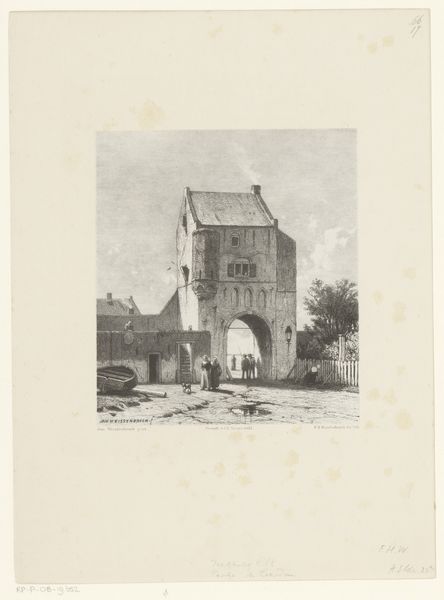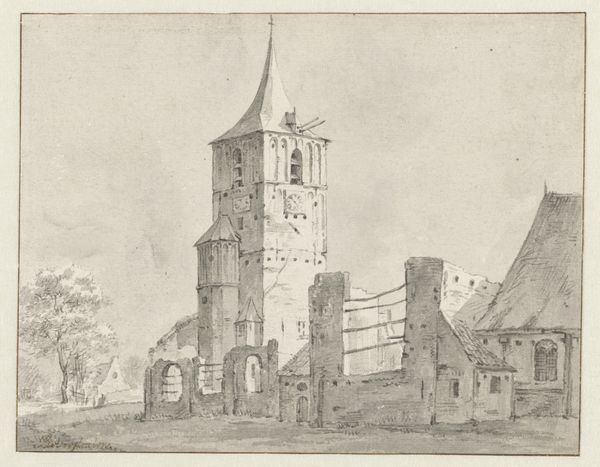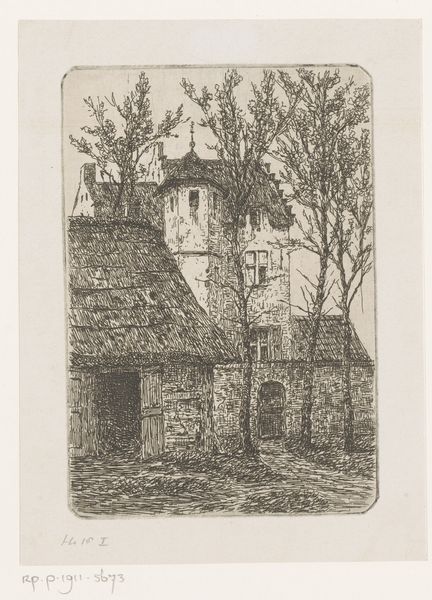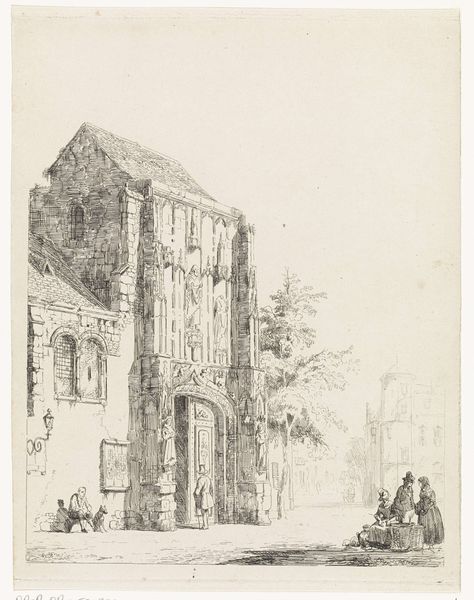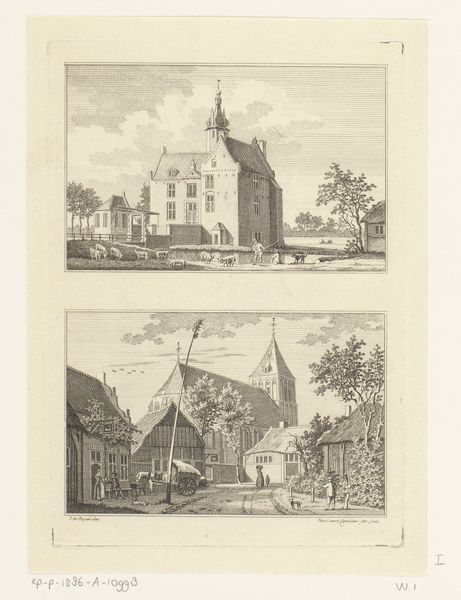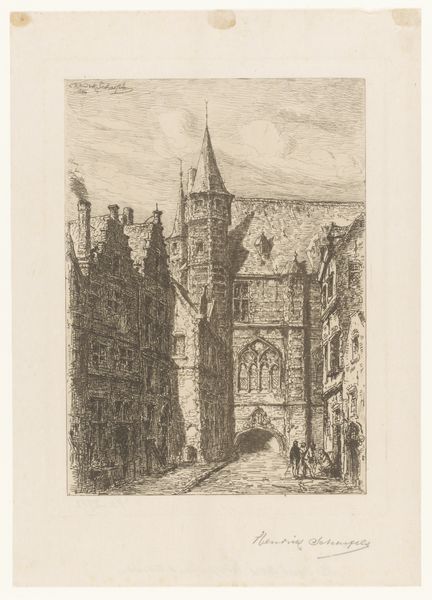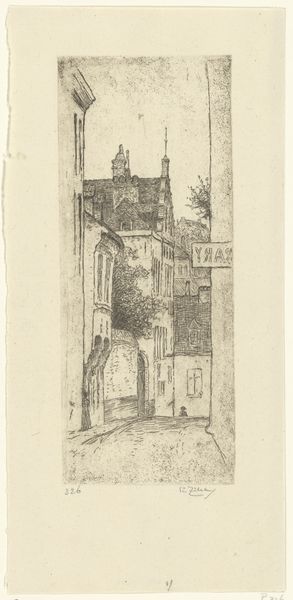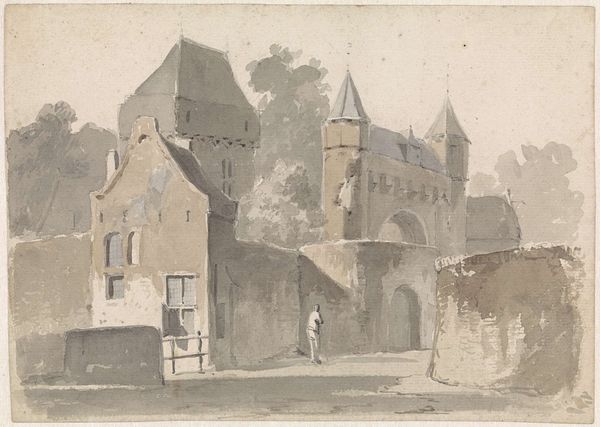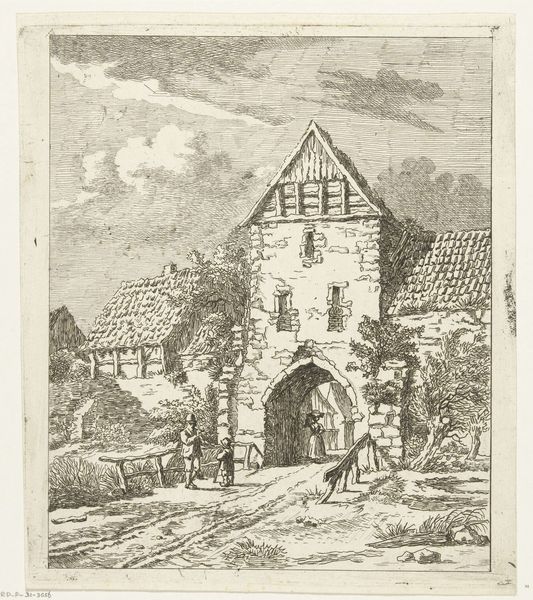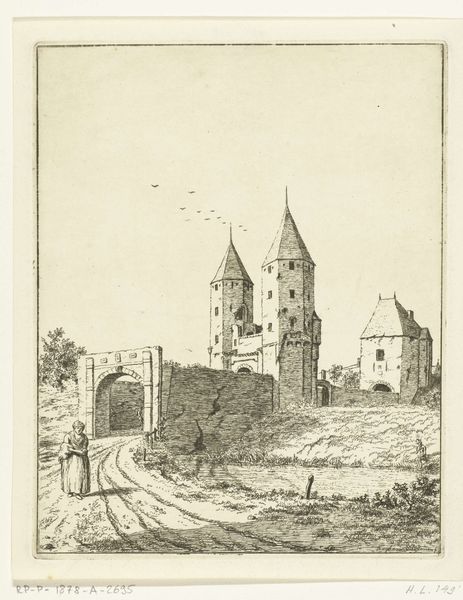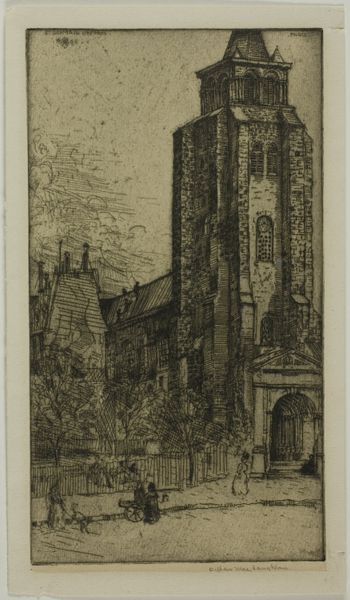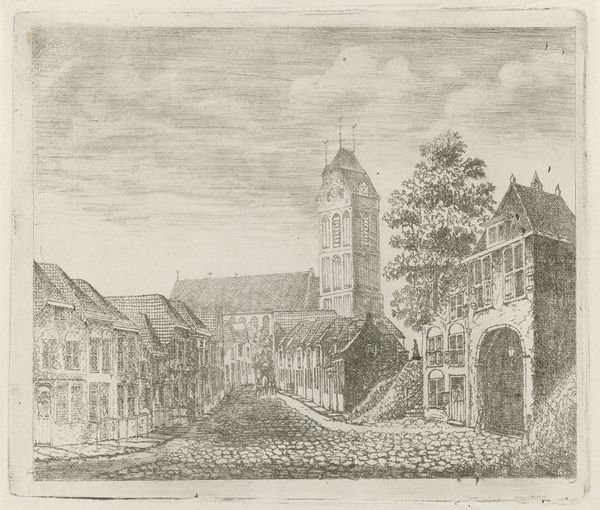
print, etching, ink
#
dutch-golden-age
# print
#
etching
#
etching
#
ink
#
pen-ink sketch
#
cityscape
#
realism
Dimensions: height 190 mm, width 160 mm
Copyright: Rijks Museum: Open Domain
Editor: Here we have Isaac Weissenbruch's "Water- of Gevangenpoort te Woudrichem," created sometime between 1836 and 1912, using etching and ink. It strikes me as quite a detailed cityscape, capturing everyday life. What historical elements do you see at play here? Curator: It’s fascinating to consider the sociopolitical forces shaping this seemingly simple scene. Notice how the gate dominates the composition. These city gates, the Gevangenpoort, originally had a clear function - control, defense, the regulation of commerce. The art becomes a way to remember their initial reason to exist. How does the way the artist portrayed it comment on its societal role at the time, during this transition period in Dutch history? Editor: It feels more like a picturesque scene than a fortress. The people casually strolling through seem almost indifferent to the gate's imposing structure. Curator: Precisely! This subtle subversion is key. Weissenbruch wasn’t simply depicting architecture; he was portraying its evolution within the public's perception. Do you think that romanticizing these previously military urban features made art more relevant at the time? Editor: I suppose showing the gate as an accepted monument might make citizens more keen on the changes of society. It’s incredible how much historical context is embedded in this etching. Curator: Indeed, by studying the seemingly mundane, we reveal powerful statements about the ever-evolving function of urban spaces and their cultural resonance. Editor: I will now view cityscapes in a whole new way!
Comments
No comments
Be the first to comment and join the conversation on the ultimate creative platform.
